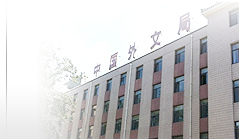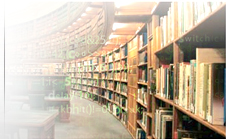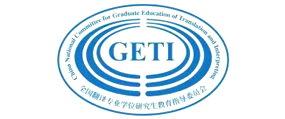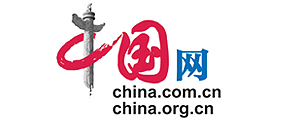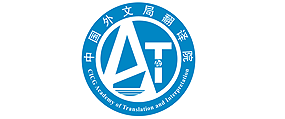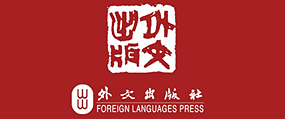目录
理论研究 /05 以“生”为本的向“生”译道
——生态翻译学的哲学“三问”审视 胡庚申
15 卢曼社会系统论视阈下翻译系统定位再探 邢杰 黄静怡
译史纵横 /
23 官智渐开:光绪、宣统朝之译务与译识 朱灵慧
29 现代时期诗译莎剧活动寻踪 张旭
译介研究 /
38 中国古典文论在西方英译与传播的理论思考
——社会翻译学的观察、主张与方略 王洪涛
46 苏轼绘画理论在欧美学界的翻译与研究 吉灵娟
翻译教学 /
54 混合式教学模式下课程思政教学实践探索
——以笔译工作坊为例 周亚莉 周继霞
61 应用型本科非英语专业口译教学思考与探索
——以实际案例为基础 潘向翀
译家研究 /
68 对话与多元
——试析许钧翻译文化观点的特征、内涵与意义 胡开宝
书刊评介 /
74 翻译的空间与对话
——《翻译空间:迈向中西方的融通》述评 张倩
学术访谈 /
80 从新时代领导人著作翻译看国家翻译实践新趋势
——黄友义先生访谈录 高玉霞 黄友义
翻译评论 /
86 葛浩文反讽翻译艺术的诗学分析 王树槐
95 《三体》在日本的生态适应
——英日间接翻译与汉日直接翻译的交叠 卢冬丽 邵宝
学术视点 /
103 当代中国翻译理论国际传播:现状与展望 韩子满 钱虹
111 《红楼梦》译名之考:互文性的视角 罗选民
实践探索 /
118 叙事距离的现代性与中国现当代小说的译写 方开瑞
125 中国特色“块状”话语及其英译研究
——英汉时空性思维差异视角 刘绍龙 王惠 曹环
134 生态翻译学视阈下政治理论文本英译研究
——以《中国道路能为世界贡献什么》为例 袁鑫
自学之友 /
141 Is the Mainstream Media Fair and Balanced? (Excerpt) (Fred Barnes) 周领顺 王志远译
146 风格标记与译内务实 周领顺
150 我与陈羽纶(林巍) 林巍译
154 在“波澜”与“不惊”之间
——人物回忆翻译探微 林巍
词语选译 /
158 《全面建成小康社会:中国人权事业发展的光辉篇章》白皮书重要语汇汉英对照摘译
第三十三届韩素音国际翻译大赛揭晓 /
160 评审工作报告、评审委员会名单、获奖名单
171 英译汉参考译文:最深刻的人生
174 英译汉译文评析:深度翻译视角的意义重构与功能路径翻译 视域的语言表达 司显柱
181 汉译英参考译文:Spring Outing and Drowning
183 汉译英译文评析:透彻理解 准确表达 姜钰
英文摘要 /
中文摘要
理论研究:
以“生”为本的向“生”译道
——生态翻译学的哲学“三问”审视
胡庚申 郑州大学 / 清华大学
——生态翻译学的哲学“三问”审视
胡庚申 郑州大学 / 清华大学
摘要:生态翻译学是什么、为什么、怎么办的问题,既是生态翻译学的基本问题,也是不少国内外学者关心的问题。本文拟从哲学“三问”视角应答此生态翻译学的“本”、“源”、“势”之问,进而确证以“生”为本的向“生”译道。作者首先以生态翻译学之“本”为题,明晰生态翻译学“一生”本、“二生”译、“三生”相、“四生”观的本体研究论域与核心研究问题;接着以生态翻译学之“源”为题,回溯西方生态主义、东方生态智慧、生物适择学说的生态翻译学三大理论支柱与理念认知和立论思想的渊“源”问题;最后以生态翻译学之“势”为题,指明在新生态主义指导下,聚焦生态翻译学理论话语体系的深化拓展与翻译实践的“十化”体系,即生态翻译的方法问题和生态翻译学怎么发展的问题。期能持续发掘生态翻译学的内生活力,聚力践行以“生”为本的向“生”译道。
关键词:生态翻译学;以“生”为本;新生态主义;“十化”体系;向“生”译道
卢曼社会系统论视阈下翻译系统定位再探
邢杰 黄静怡 广东外语外贸大学
摘要:随着翻译行业的发展,翻译系统在社会环境中的定位及功能愈发成为学界关注的重点。借鉴卢曼社会系统论的视角,研究者得以重新审视翻译系统的本质属性、存在方式、内部运行机制以及翻译系统与其他社会系统间的互动联通。本文尝试从卢曼社会系统论的“系统”和“沟通”等核心概念出发,梳理其与翻译研究结合的方法路径,为翻译系统定位,对其价值和功能做出描述。邢杰 黄静怡 广东外语外贸大学
关键词:卢曼;社会系统论;翻译系统;翻译社会学
译史纵横:
官智渐开:光绪、宣统朝之译务与译识
朱灵慧 中南财经政法大学
朱灵慧 中南财经政法大学
摘要:清末翻译高潮的兴起并非一蹴而就,而是以筹防心态到求强求变的转变为铺垫。综理《清季外交史料》相关档案可见,光绪、宣统两朝对翻译费墨颇多,记录了文书翻译、约章翻译、界务翻译、律例翻译和书报翻译等诸多具体翻译事务,大量夹陈清廷官员在中外语言接触和翻译事务中的态度与认识。一方面,为时局所迫,清廷对语言问题日益警惕和重视,通过反复核对、详校译文等方式以确保权益;另一方面,逐渐意识到译之迫切与必要,在译员选派、华报译出、开启民智等方面提出裨益时局的观点和细则。清末翻译从求不至被蒙蔽,到主动译入借鉴,显现出中外交往中从被动接受到主动抗衡的转变。纵然充满被动与无奈,但官员阶层对翻译的态度映射出清廷主权意识、制度意识和求强意识的转变,在此意义上,可以说,清末官智逐渐开启。
关键词:清末;外交;译务;译识;官智渐开
现代时期诗译莎剧活动寻踪
张旭 广西民族大学
摘要:现代翻译研究认为:翻译就是对原文的一种重写。所有的翻译,无论其目的何在,都会反映某种意识形态和诗学观,进而以某种方式操纵特定社会的文学。这点在诗歌翻译领域同样如此吗?本研究尝试运用现代翻译理论,以现代时期诗译莎剧为个案展开研究。文章主要考察众译家诗译莎剧时如何做出自己的诠释和再现,重点体察其采取的翻译策略和规范,进而探讨译作在接受文化圈内的文化内涵以及取得的诗学效应,最后提出自己的反思意见。张旭 广西民族大学
关键词:莎剧;诗译;诗学观;意识形态;重写
译介研究:
中国古典文论在西方英译与传播的理论思考
——社会翻译学的观察、主张与方略
王洪涛 北京外国语大学
——社会翻译学的观察、主张与方略
王洪涛 北京外国语大学
摘要:本文立足社会翻译学的理论框架,借鉴布尔迪厄、拉图尔、卢曼等当代西方社会学家的理论思想,综合分析中国古典文论在西方英译与传播活动所涉及的宏观、中观、微观等因素与译前、译中、译后各环节,揭示了其中的主要关系与基本规律。基于以上考察,文章依据社会翻译学的基本原理,秉持其关系主义方法论与整体论原则,就中国古典文论在西方英译与传播实践中的译者构成、原作遴选、英译策略、译作在西方的传播与接受等问题提出了一系列对策性的主张与方略,以期促进中国古典文论在西方的有效英译与深入传播。
关键词:中国古典文论;社会翻译学;翻译与传播;中国文学“走出去”
苏轼绘画理论在欧美学界的翻译与研究
吉灵娟 杭州师范大学
吉灵娟 杭州师范大学
摘要:苏轼作为中国文学史上的文学巨儒,在绘画艺术上同样成就斐然。他的书画遗迹虽少,但是关于绘画的理论在艺术史上影响巨大。西方学界对苏轼绘画艺术及理论的关注肇始于19世纪末,经翟理思及韦利等早期汉学家的译介,已形成一定影响。艺术界对其绘画艺术成就及理论的深挖则是在20世纪上半叶,如喜龙仁、汉斯·弗兰克等人对其绘画理论的翻译和阐释,对其理论的构成、影响力等方面进行了探讨。本文认为20世纪初期苏轼绘画理论的翻译与研究对中国绘画艺术在西方的传播产生深远影响,尤其是苏轼的“诗画一律”“气韵”“笔法”“功夫”等核心术语,经艺术史学家的阐释,逐步推进了苏轼画论在西方艺术史中话语体系的生成,进一步提升了中国早期艺术在西方艺术史中的地位。
关键词:苏轼;绘画理论;喜龙仁;汉斯·弗兰克;译介
翻译教学:
混合式教学模式下课程思政教学实践探索
——以笔译工作坊为例
周亚莉 周继霞 西北师范大学
——以笔译工作坊为例
周亚莉 周继霞 西北师范大学
摘要:课程思政是当前高校思政工作的重中之重,将思政元素融入翻译课堂对全面推进翻译课程思政教育具有重要意义。本文以西北师范大学翻译专业“笔译工作坊”课程思政建设为例,挖掘思政元素,采用“微课+慕课+雨课堂”混合式教学模式,针对“思政育人、知识积淀、技能提升和就业拓展”等教学目标进行系统的教学设计,动态推进教学评价,旨在整合翻译课程思政内容资源,探讨翻译课程思政的实践路径,推进课程思政背景下的翻译教学改革。
关键词:课程思政;混合式教学;教学设计;笔译工作坊
应用型本科非英语专业口译教学思考与探索
——以实际案例为基础
潘向翀 上海商学院
——以实际案例为基础
潘向翀 上海商学院
摘要:本文以笔者所教授的上海商学院酒店管理专业2017级英语口译课程为基础,结合具体实践,采用定性和定量相结合的方法,对应用型本科非英语专业英语口译课程的教学现状、目的、原则、目标、方法及内容进行了初步分析,并提出相应的改进策略,旨在丰富应用型本科非英语专业口译教学实践和理论研究。
关键词:应用型本科;非英语专业;英语口译;教学
译家研究:
对话与多元
——试析许钧翻译文化观点的特征、内涵与意义
胡开宝 上海外国语大学
——试析许钧翻译文化观点的特征、内涵与意义
胡开宝 上海外国语大学
摘要:本文详细分析了许钧的翻译文化观点的缘起、特征、主要内容及其意义。本文认为许钧的翻译文化观点形成于其语言转换观与巴斯奈特文化翻译观的有机融合,其特征主要表现为:首先,立足翻译研究,语言与文化并重;其次,着眼文化差异,关注文化多样性;第三,紧扣文化内涵,多视角研究翻译。许钧翻译文化观的主要内容包括翻译的文化本质、翻译的文化意义、译者身份的文化属性以及翻译研究的文化视野,对当代翻译研究不无启示意义。
关键词:许钧;翻译文化观;意义
书刊评介:
翻译的空间与对话
——《翻译空间:迈向中西方的融通》述评
张倩 西安外国语大学
——《翻译空间:迈向中西方的融通》述评
张倩 西安外国语大学
摘要:翻译学的发展得益于新元素的引入以及与其他学科的对话,中国译学的发展也得益于同国际译学界的对话。孙艺风的最新英文专著Translational Spaces: Towards a Chinese-Western Convergence(《翻译空间:迈向中西方的融通》)由劳特里奇出版社于2021年出版。该书借助空间概念,透视了中西方语境下的一系列翻译研究课题,从理论到实践、从全球到本土,为翻译领域的诸多现象提供了新的空间化诠释。该书的重要意义在于开辟了理解翻译机制与解决翻译问题的空间维度,丰富了现有的翻译理论,为翻译赋能提供了新的空间化思路,同时也表达了中国译学界以中西方融通为目标的跨文化与跨学科的对话诉求,具有重要的学术与实际价值。
关键词:翻译;空间;对话;融通
学术访谈:
从新时代领导人著作翻译看国家翻译实践新趋势
——黄友义先生访谈录
高玉霞 中国海洋大学 | 黄友义 中国翻译协会
——黄友义先生访谈录
高玉霞 中国海洋大学 | 黄友义 中国翻译协会
摘要:国家领导人的言说著述是中国国家治理的智慧结晶,其对外翻译是构建中国对外政治话语体系的重要途径之一。本文就新时代领导人著作翻译的新特点、新规范,政治概念话语的引进与输出,翻译如何助力中国参与全球治理和中国国家治理等问题,对黄友义先生做了专访,以期为读者了解党政文献翻译,特别是新时代领导人著作的翻译打开一扇窗,也借此说明我国国家翻译实践的新趋势,为日后的国家翻译实践指明方向。
关键词:领导人著作翻译;国家翻译实践;访谈
翻译评论:
葛浩文反讽翻译艺术的诗学分析
王树槐 华中科技大学
王树槐 华中科技大学
摘要:反讽是文学的重要表现手段。基于自建的“葛浩文反讽翻译语料库”,我们从诗学角度总结了葛浩文实现反讽的五个维度,以及具体的诗学手段:1)在陌生化维度,他采用了质的偏离和量的偏离;2)在张力维度,他表现于语义张力、语域张力、口吻张力、节奏张力;3)在意象维度,他基于通约性大量地保留意象,并辅以少量的省略、补充、替换;4)在韵律方面,他通过改写以求尾韵,并展现恒定的“徐长、抑扬型句式音步”;5)在叙事维度,他根据语境选用了恰当的叙说方式、描写主次。最后,基于对英语母语读者和汉学家的调查,我们指出了葛浩文反讽翻译的失误。对葛浩文反讽翻译的诗学分析,能为中国文学外译和高级汉英人才培养提供借鉴。
关键词:葛浩文;反讽;翻译;诗学
《三体》在日本的生态适应
——英日间接翻译与汉日直接翻译的交叠
卢冬丽 南京农业大学 | 邵宝 苏州大学
——英日间接翻译与汉日直接翻译的交叠
卢冬丽 南京农业大学 | 邵宝 苏州大学
摘要:《三体》在日本的翻译特征体现为英日间接翻译与汉日直接翻译两种翻译行为的交叠,这表明《三体》在日本语境中同时经历了内生态的选择性适应与外生态的适应性选择两种生态适应模式。外生态语境主导下的译者再选择,促使直接翻译的文本经由中介语英译本,间接翻译为全新的译本。中介语社会的外语境评价以及出版社、评论家、相关机构等日本内生态语境的大力推介,共同促进了《三体》在日本语境的生态适应,获得日本读者的广泛认可。《三体》的日译是中国科幻文学在日本生态适应的个例,有其独特性,同时给中国科幻以及中国文学外译提供了诸多参考。
关键词:《三体》;日本;生态适应;英日间接翻译;汉日直接翻译
学术视点:
当代中国翻译理论国际传播:现状与展望
韩子满 上海外国语大学 | 钱虹 上海外国语大学/台州学院
韩子满 上海外国语大学 | 钱虹 上海外国语大学/台州学院
摘要:新世纪以来中国翻译学界生成了一系列具有中国特色的当代翻译理论,中国学者的译学成果一定程度上在国际学界获得了认可。然而,通过对译介学、生态翻译学等13种当代中国翻译理论在国际学术期刊和国际译学著作的传播现状调查发现,中国学者主动积极推介中国翻译理论的意识仍然有待提高,国外学者对中国翻译理论的关注度较低。学界应该强化国际传播意识,主动积极推介当代中国翻译理论,提升中国翻译理论的国际认知度,促进国外学者的间接传播,助力建构中国翻译理论话语体系。
关键词:当代中国翻译理论;国际传播;国际认知度;翻译理论话语体系
《红楼梦》译名之考:互文性的视角
罗选民 广西大学
罗选民 广西大学
摘要:《红楼梦》全译本的译名有两种,The Dream of Red Mansions 和 The Story of the Stone,学界过去绝大部分研究认为前者更优,因为更能反映中国文化精神,而且前者的异化翻译优于后者的归化翻译。本文从互文性的视角,对小说版本进行了考证,详析了两种译名的语言要点和文化因素,考虑了两个译本在西方受众中的接受状况,明确指出:两个书名不存在异化和归化翻译之争;第二个译名不仅能体现中国文化精神,还能与西方文化和文学产生互文效应,从而产生最大的可接受度。文章结论是:在不同译本同时出现文化层面和语言层面的互文时,前者优于后者。这可以成为两种译名的评价公式。
关键词:互文性;《红楼梦》;《石头记》;版本;文化视域;可接受性
实践探索:
叙事距离的现代性与中国现当代小说的译写
方开瑞 广东外语外贸大学
方开瑞 广东外语外贸大学
摘要:在叙述者、叙事、叙事效果等密切关联的三个要素当中,“叙事”涉及叙事距离。作为叙述者调节信息的主要方式,叙事距离发挥着重要的功能性作用,并直接影响叙事效果。从19世纪后半叶到20世纪初,因文化交流与文艺思想的推动,国际国内的小说在叙事距离上发生了现代性变革,这深入影响小说的叙事肌理和格调。本文阐述了叙事距离的内涵与现代性,提出了中国现当代小说在叙事距离译写上应当注意的问题。
关键词:叙事距离;现代性;中国现当代小说;译写
中国特色“块状”话语及其英译研究
——英汉时空性思维差异视角
刘绍龙 浙江越秀外国语学院 | 王惠 西交利物浦大学 | 曹环 浙江越秀外国语学院
——英汉时空性思维差异视角
刘绍龙 浙江越秀外国语学院 | 王惠 西交利物浦大学 | 曹环 浙江越秀外国语学院
摘要:本文在英汉时空性思维差异论指导下,探讨中国特色话语的块状性、离散性等强意合特征和英语延续性、勾连性等强形合特征及其差异影响下的块状语英译模式及加工范式等。研究发现:1)中国特色话语彰显“空间性”思维观照下的块状性、离散性等强意合特征;2)英语文本昭示“时间性”思维观照下的勾连性、延续性等强形合特征;3)高水平英译的“形合性”取向明显,基本顺应了目标英语“时间性”思维观照下的勾连性、延续性特征;4)中国特色话语的强意合性对译者的源语理解和目的语构建产生一定的迁移作用;5)整体性加工范式和分析性加工范式对中国特色块状话语构造及其强形合英译均有不同程度的影响。这些重要发现可为今后的相关研究及翻译实践、翻译教学带来一定的启示。
关键词:汉语块状话语;强意合特征;强形合英译;认知加工范式
生态翻译学视阈下政治理论文本英译研究
——以《中国道路能为世界贡献什么》为例
袁鑫 天津外国语大学
——以《中国道路能为世界贡献什么》为例
袁鑫 天津外国语大学
摘要:文章借鉴生态翻译学理论,从生态视角综观翻译整体,以作者译本《中国道路能为世界贡献什么》(以下简称“《中国道路》”)为例,探讨政治理论类文本的英译研究。政治理论类文本的英译,是一个需要从多维度进行选择与适应的翻译过程,既要维护翻译语言忠实于原文,又要呈现翻译文化的多样性,得到目的语国家读者的认可和接受。文章将主要从语言维度、文化维度和交际维度这三个方面展开分析,研究如何以生态适应来选择翻译文本,实现最佳适应性转换,适应译语的生态环境。
关键词:生态翻译学;政治理论;适应性转换
第三十三届韩素音国际翻译大赛英译汉译文评析:
深度翻译视角的意义重构与功能路径翻译视域的语言表达
司显柱 北京第二外国语学院
司显柱 北京第二外国语学院
摘要:基于笔者对第三十三届韩素音国际翻译大赛英译汉参赛译文的评阅,文章以“深度翻译”理论为指导,讨论了译文如何在文化和语言维度实现对原文的意义重构;从“功能路径翻译”视角考察了翻译的语言表达,评析参赛译文的成败与得失,在此基础上论述了翻译的要义及其对当下我国高校翻译教学的反思。
关键词:深度翻译;功能路径翻译;韩素音国际翻译大赛
本期英文摘要
(英文摘要修订:刘亚猛)
(英文摘要修订:刘亚猛)
The Dao of “Eco-life”-oriented Translation:Tackling Three Philosophical Questions about Eco-Translatology
By HU Gengshen (Zhengzhou University, Zhengzhou, China / Tsinghua University, Beijing, China) p.5
Abstract: This paper reflects on the practices and developments of Eco-Translatology over the past two decades, in a bid to tackle three philosophical questions about this field, namely, “what it is”, “where it came from” and “how it will go on developing itself.” To answer the ontological question of “what it is,” the paper subsumes Eco-Translatology’s main research foci and tenets under the central concept of “Eco-life Root,” which in itself results from a merging of “textual life,” “translator survival” and “translation ecology” into an “Eco-life.” This single “Eco-life Root” gives rise successively to the notion of “Eco-life Translation”, of “Eco-life Domain”, and of “Eco-life Maxim,” as well as a whole series of other eco-translatological ideas pertaining to Eco-life orientation. For the question about the field’s origination, the paper identifies Western ecological concepts, Eastern eco-wisdom and the principle of adaptation & selection as its three main theoretical sources. And for the question about the direction of its further development, the paper predicts that Eco-Translatology will go on practicing the Neo-ecosophy of Translation, focusing on practical “green” translation studies and allying itself with eco-critic, eco-linguistic, eco-poetic, eco-cultural studies. These answers make available a framework that would enable Eco-Translatology to carry forward the dao of “Eco-life”-Oriented Translation in the years to come. By HU Gengshen (Zhengzhou University, Zhengzhou, China / Tsinghua University, Beijing, China) p.5
Keywords: Eco-Translatology; Eco-life orientation; Neo-ecosophy of translation; the dao of “Eco-life”-Oriented Translation
Repositioning Translation System in Line with Luhmann's Social Systems Theory
By XING Jie & HUANG Jingyi (Guangdong University of Foreign Studies, Guangzhou, China) p.15
Abstract: How the translation system is positioned and how it functions in society have increasingly become two related foci of attention from translation scholars. This paper argues that Luhmann’s Social Systems Theory (SST) offers a useful starting point for understanding the nature of the translation system and allows researchers to rethink its internal formation and its external interactions with other social systems. Based on a close examination of Luhmann’s key theoretical concepts such as system and communication, the paper outlines a new analytical perspective from which to determine translation system’s positioning as well as its functions and values within the social framework. The discussion is meant to add to the enrichment of the sociological studies of translation.By XING Jie & HUANG Jingyi (Guangdong University of Foreign Studies, Guangzhou, China) p.15
Keywords: Niklas Luhmann; Social Systems Theory (SST); translation system; sociology of translation Studies
Translation Activities in the Twilight Years of the Qing Dynasty
By ZHU Linghui (Zhongnan University of Economics and Law, Wuhan, China) p.23
Abstract: The translation boom in the final years of the Qing dynasty did not come all of a sudden, but as the result of a shift from a passive to an active approach to matters of translation by the authorities. This is a conclusion drawn from a close reading of Qingji Waijiao Shiliao (Historical Sources of the Late Qing China’s Diplomacy). As the documents collected in the volume also show, a wide range of translation activities – from the rendition of official documents, contracts, treaties, and diplomatic representations concerning border conflicts to that of important foreign publications -- was being undertaken during this period, and the official attitude towards cross-linguistic interactions was apparently undergoing a major change at the same time. Such a change was brought about first by the Qing Court’s realization that wording in translation was no trivial matter, since any error in this regard could harm the empire’s rights and interests. Later on, there also appeared to be a growing awareness on the part of some officials that translation could play a vital role in national development as well and that the Court should therefore adopt a more proactive attitude toward it. The shift in attitude ran parallel to a heightening in the officialdom’s consciousness of the empire’s sovereignty, political system and national strength. And it sped up the process of opening up to the outside world toward the end of the Qing dynasty.By ZHU Linghui (Zhongnan University of Economics and Law, Wuhan, China) p.23
Keywords: the Qing dynasty; foreign contact; translation activity; translation attitude; consciousness
Versified Chinese Renditions of Shakespeare's Plays before 1950: A Reexamination
By ZHANG Xu (Guangxi University for Nationalities, Nanning, China) p.29
Abstract: Contemporary translation theories have it that translation is necessarily a rewriting of an original text. Since all such rewritings reflect the ideologies and the poetics embraced by the translators concerned, they tend to manipulate the source literature in a certain way for the target society. Is such a perspective applicable also to the mode of verse translation? For an answer to the question, this paper takes another look at the versified Chinese translations of Shakespearean plays published before 1950. Drawing on the theoretical resources offered by translation studies, the paper examines the way the translators reinterpreted the source texts, the translation strategies and norms they adopted, the aesthetic effects they aimed to achieve, and the cultural implications their renditions encoded for the target society. What this case study has revealed provokes some critical reflections on the concept of rewriting.By ZHANG Xu (Guangxi University for Nationalities, Nanning, China) p.29
Keywords: Shakespearean plays; versified translation; poetics; ideology; rewriting
English Translations of Classical Chinese Literary Theories in the West: A Socio-Translational Perspective
By WANG Hongtao (Beijing Foreign Studies University, Beijing, China) p.38
Abstract: English translations of classical Chinese literary theories meant for circulation in the West constitute a significant component of the current project to see Chinese literature “go global.” This article offers a comprehensive analysis, at both the micro-, the meso- and the macro-level, of the major factors involved in this endeavor. Within the framework of sociological studies of translation, and by deriving theoretical insights especially from Bourdieu, Latour and Luhmann, it proposes various translation strategies for dealing with issues encountered in the process of turning classical Chinese literary theories into English for an audience in the West, such as the collaboration of translators, the selection of the SL text, the adoption of active translation methods, and the transmission of the translated works. Adopting these proposed strategies is expected to facilitate the dissemination and reception of Chinese literary theories in the West, and in the long run it would also make it easier for traditional Chinese poetics to blend into an international discourse of literary theories that is now taking shape.By WANG Hongtao (Beijing Foreign Studies University, Beijing, China) p.38
Keywords: classical Chinese literary theories; translation and transmission; Chinese literature “going global”; Socio-Translation Studies; the international discourse system
Scholarly Translations and Studies of Su Shi's Theory of Painting in the U.S. and Europe
By JI Lingjuan ( Hangzhou Normal University, Hangzhou, China)p.46
Abstract: A towering figure in the history of Chinese literature, Su Shi of the Song dynasty was just as distinguished for his achievements in the field of art. Even though only a few of his artistic works survive, his theory of painting has nonetheless remained highly regarded. The oversea attention to Su Shi began in the late 19th century, when introductory translations of his discussions on painting by H. Giles, Arthur Waley and other sinologists generated considerable interest in his theory of art among Western scholars. In the first half of the 20th century, Osvald Siren, Hans Frankel and others looked deeper into Su’s theory and used it as a point of reference in their comparative studies of Western and Chinese arts. Their translations and studies have further disseminated Su’s insights into the aesthetics of painting and calligraphy throughout the Western world. As a result, Su’s observations on “the similarity or commonness between poetry and painting”, “rhythmic vitality”, “brushwork” and “Kung Fu” have become well-known among Western scholars of art. In Su Shi, we have thus a case of how translation has enabled fruitful exchanges between Chinese and Western conceptions of art and has elevated China’s profile in the Western history of art.By JI Lingjuan ( Hangzhou Normal University, Hangzhou, China)p.46
Keywords: Su Shi; theory of painting; translation; Osvald Siren, Hans Frankel
Xu Jun's Cultural Conception of Translation and Its Implications
By HU Kaibao ( Shanghai International Studies University, Shanghai, China) p.68
Abstract: This article discusses the origin, characteristics, main contents, and implications of Xu Jun's cultural conception of translation. It maintains that the conception took shape as a result of an integration of Xu’s view on translation with Bassnett’s view of cultural translation. Equal emphasis is thus laid in Xu’s theory on both the linguistic and the cultural approaches to translation studies, with special importance being attached to cultural differences and cultural diversity. The conception concerns itself primarily with the cultural nature and cultural implications of translation, the cultural attributes of the translator's identity, and the cultural approach to translation studies. As such, Xu’s general perspective not only adds a new dimension to translation studies, but also points to a new direction for further development of the field.By HU Kaibao ( Shanghai International Studies University, Shanghai, China) p.68
Keywords: Xu Jun; Cultural Outlook on Translation; implication
A Poetics-guided Inquiry into Howard Goldblatt's Translation of Irony
By WANG Shuhuai (Huazhong University of Science & Technology, Wuhan, China) p.86
Abstract: Irony is an important literary device which translators often have to deal with. With the help of an ad hoc corpus of “the treatments of irony in Goldblatt’s translations,” this study identifies five strategies which the celebrated C-E literary translator has employed to reproduce ironies in the target texts. These are: 1. Defamiliarization, realized through qualitative or quantitative deviance; 2. Tension, created in the semantic, register, tonal or rhythmic mode; 3. Imagery, evoked through retention, omission, adding or substituting of the original text without violating the target language conventions; 4. Phonological effects, produced through manipulation of the sentential rhyme or rhythm; 5. Narrative strands, developed by mixing modes or varying descriptive prominence. A critical evaluation of Goldblatt’s renditions of irony, in terms of their reception by native speakers of English, is also offered following the discussion on the strategies he characteristically adopts.By WANG Shuhuai (Huazhong University of Science & Technology, Wuhan, China) p.86
Keywords: Howard Goldblatt; irony; translation; poetics
International Dissemination of Contemporary Chinese Translation Theories: Present Status and Prospect
By HAN Ziman (Shanghai International Studies University, Shanghai, China) & QIAN Hong (Shanghai International Studies University, Shanghai, China/ Taizhou University, Taizhou, China) p.103
Abstract: Since the beginning of the 21st century, a number of translation theories with Chinese characteristics have emerged. While these theoretical models have started to attract attention from international scholars, a survey of their references in relevant international academic journals and publications indicates that the recognition they have won so far from outside of China remains quite limited, and more efforts should be made by Chinese scholars themselves to actively promote their theoretical achievements abroad. Chinese translation scholars ought to heighten their own awareness of the need to communicate, both directly and indirectly, with their foreign colleagues. And they should also realize that a proper international recognition of their theoretical achievements would in turn facilitate the construction of a domestic discourse system for further development of Chinese translation theories.By HAN Ziman (Shanghai International Studies University, Shanghai, China) & QIAN Hong (Shanghai International Studies University, Shanghai, China/ Taizhou University, Taizhou, China) p.103
Keywords: contemporary Chinese translation theory; international dissemination; international recognition; discourse system of translation theory

